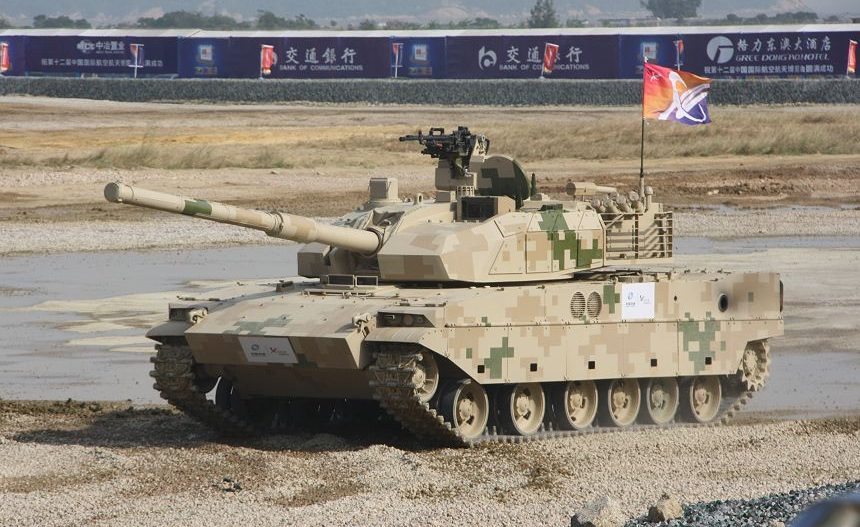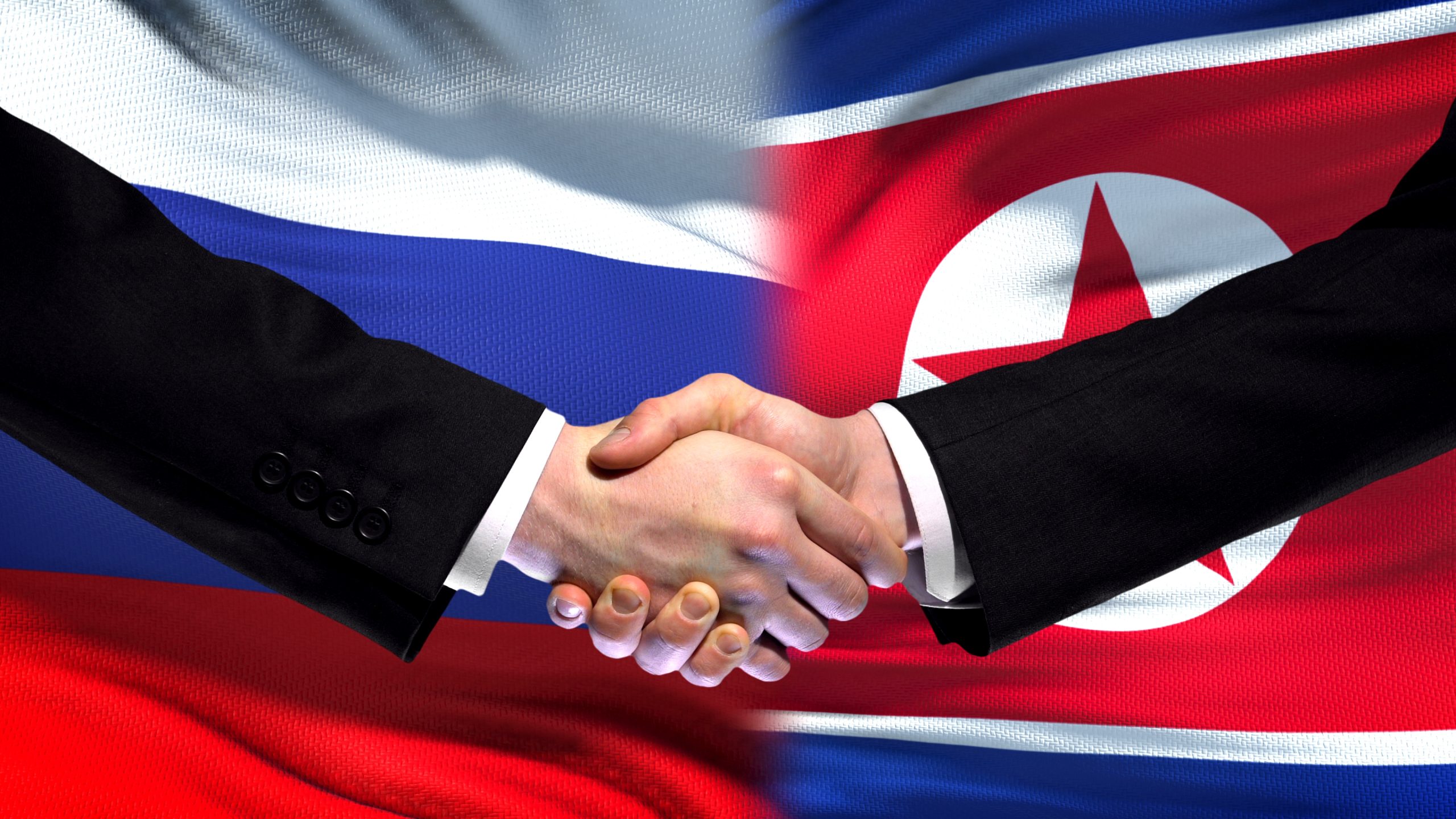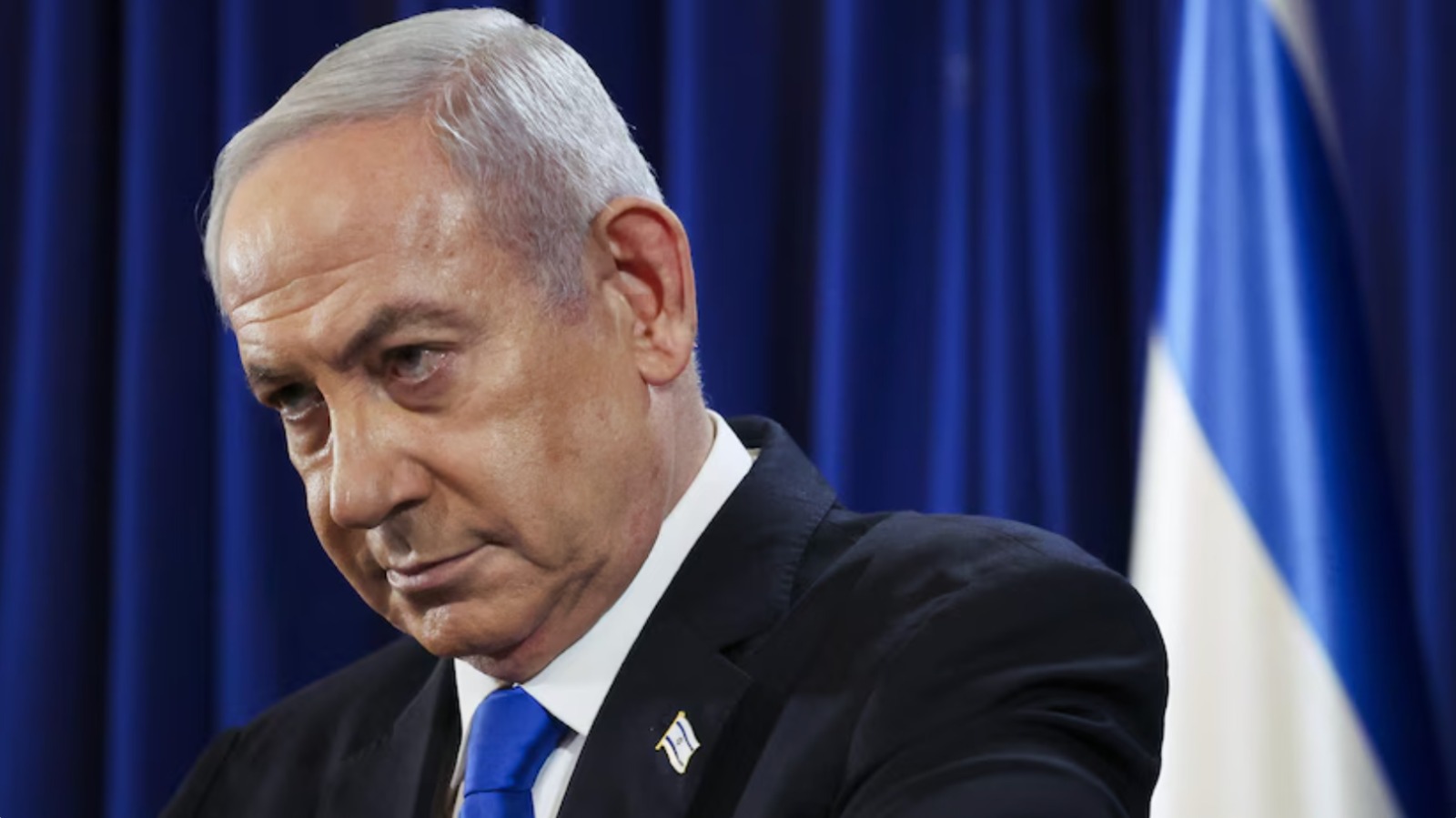
China Tanks Up Its Expeditionary Forces
Tue, 15 Jun 2021 | Reading Time: 7 minutes

China Tanks Up Its Expeditionary Forces
CCTV, China’s state-owned television broadcaster, revealed something significant in a report aired on 2 June. It showed members of the PLA Navy Marine Corps (PLANMC) examining new ZTQ-15 light tanks after an exercise. The surprising revelation that Chinese marines are bulking up on heavier armoured vehicles is a very important development.
Indeed, this is the first time the PLANMC has owned genuine tanks – as opposed to armour like ZBD-05/ZTD-05 amphibious vehicles or ZTL-11 8×8 tank destroyers. As the PLA’s premier amphibious and expeditionary force, the marine corps is obviously eyeing a new and broader range of missions.
Firstly, what is a ZTQ-15 (also known as Type 15) tank? It is the PLA ground force’s newest tank, first fielded by the 123rd Combined Arms Brigade in the Southern Theatre Command, and then in Tibet and most recently in an unidentified Xinjiang unit. At 36 tonnes, this light tank is 9.2m long. Crewed by three soldiers, it is armed with a 105mm rifled main gun that utilizes an automatic loader. The weapon can even fire a laser-guided projectile with a 5km range. A 1,000hp diesel engine powers it to speeds of 70km/h and it has a 450km range. A modular protection package consisting of composite armour and explosive reactive tiles can be added too. (Read more about India’s Quest for Light Tanks at https://bit.ly/3xnCDo5)

Image Source: armyrecognition.com
The PLA is believed to have started inducting the Norinco-built ZTQ-15 in late 2018. A variant for export is the VT5, first shown in 2016. The first VT5 export customer is Bangladesh, with deliveries of an estimated 44 tanks imminent. Returning to June’s CCTV footage, it showed ZTQ-15 tanks loaded aboard railcars ready for transport. The report did not indicate the location, nor which unit. Significantly, the CCTV piece stated that a PLANMC exercise had recently been conducted in a high-altitude area, indicating either Tibet or Xinjiang.
A critical snippet of information in the report revealed that a marine infantry battalion had been re-equipped with these tanks as a combined-arms battalion. This strongly suggests that the PLANMC is readying itself to better conduct multi-domain operations. Indeed, the thrust of the CCTV clip was how the PLANMC is modernizing to become a more-rounded combined-arms force rather than merely an amphibious one.
The PLANMC currently has six combat brigades: the 1st Marine Brigade (Zhanjiang, Guangdong); 2nd Marine Brigade (Zhanjiang, Guangdong); 3rd Marine Brigade (Jieyang, Guangdong); 4th Marine Brigade (Quanzhou, Fujian); 5th Marine Brigade (Qingdao, Shandong); and 6th Marine Brigade (Linyi, Shandong). If one of these brigades already has a battalion fielding Type 15 tanks, it is entirely possible the same will eventually occur in every marine brigade. This restructuring of the PLANMC into a multi-domain force commenced in 2017. The corps has already received 8×8 armoured vehicles in recent years, which permit rapid road movement too far-flung destinations. Furthermore, such vehicles can be more easily transported by aircraft or ship. However, issuing heavier tanks is a further major capability boost for the marines.
Ironically, in what many would consider a doubling-up, PLA ground forces possess amphibious units too (four brigades in the Eastern Theatre Command and two in the Southern Theatre Command). They are equipped with ZBD-05 and ZTD-05 amphibious assault vehicles, just like the PLANMC. Now that Chinese marines are fielding heavier tanks, a role previously reserved for ground forces, the lines between ground forces and PLANMC seem to have become more blurred. The bottom line is that it reflects a Chinese desire to project heavier forces in an expeditionary manner to overseas locations.
Ironically, this move to equip Chinese marines with tanks contrasts sharply with the US Marine Corps (USMC) that recently divested itself of its M1A1 Abrams tank fleet in order to meet future missions, chief of which is combating the PLA! We have here a contrast – the USMC seeking to become leaner and more mobile, whereas the PLANMC is bulking up.
General David Berger, the USMC commandant, earlier stated, “China, in terms of military capability, is the pacing threat. If we did nothing, we would be passed.” For the PLANMC, this wider mandate reflects a shift in doctrine from a preoccupation with defending China’s “near seas” to a stronger focus on “far seas” protection. This was illustrated in late 2008 by China’s decision to dispatch a naval counter-piracy task force to the Gulf of Aden. Since then, the PLAN has evacuated civilians from Libya (2011) and Yemen (2015) and helped search for a missing Malaysian airliner (2014).
A recent publication from the National Defence University (NDU) in Washington DC, entitled “The PLA Beyond Borders – Chinese Military Operations in Regional and Global Context”, discussed the outward-looking focus of the PLA. Its preamble said, “A complete accounting of Chinese overseas operations requires reference to an extensive set of motivating factors, which are not mutually exclusive, including China’s desire for recognition as a global military power and accumulation of status symbols, such as aircraft carriers; protection of overseas interests, ranging from maritime territorial claims to overseas property and personnel; bureaucratic rivalries in a constrained budget environment, which have led both the army and air force to posture themselves as ‘power projection’ services with important overseas missions, competing with the navy for scarce resources; and profit motives, which remain a primary objective of China’s arms sales.”
Kristen Gunness, one author of the report, said overseas deployments are likely under five conditions: when domestic or international expectations pressure Beijing to act; when Chinese interests are directly threatened; when a PLA presence can help build China’s influence and military ties with host governments; when the PLA can gain overseas deployment experience/training while contributing to international security missions; and when the PLA’s expeditionary capabilities are mature enough to accomplish the mission and other options, such as free-riding on other countries’ capabilities, are insufficient.”
China’s nearest definition to “expeditionary” is its term “strategic delivery”. The PLA dictionary describes it as “comprehensive use of all types of military transportation and units to deliver military power to a combat or crisis situation for the purposes of achieving a strategic objective”. This definition primarily connects it to a crisis or conflict, rather than the USA’s wider reference to the peacetime-wartime spectrum. Secondly, it suggests military power should be used only to achieve a strategic objective, reinforcing China’s principle of non-interference. Thirdly, it encompasses both domestic and international activities.
Thus, the PLA’s expeditionary mission set includes maritime, air and land operations that may be far beyond China’s borders, or alternatively operations along its border to give itself the ability to push deep into a neighbouring country. However, there is growing evidence that China’s “expeditionary” definition will narrow to fall more in line with the US concept. Whatever the case, an expanded PLANMC of about 30,000 marines is at the heart of a more robust expeditionary posture. Furthermore, there is public support amongst the Chinese populace for a more proactive military presence abroad to exert influence and achieve foreign policy goals.
Nonetheless, Gunness highlighted four challenges for China’s developing expeditionary stance. One is personnel and training, with only a small percentage having overseas experience, and even fewer having worked with multinational forces in hostile environments. Another is command and control of forces overseas, with distance affecting communications and decision-making. Third is logistics and basing, with the PLA hampered by insufficient airlift/sealift capacity. That is changing with platforms like Y-20 aircraft and Type 075 landing helicopter dock ships, but China r needs to negotiate agreements for military access to ports with countries like Cambodia, Pakistan and Sri Lanka. A final challenge is balancing competing requirements, as far-flung theatres compete with Beijing’s focus on Taiwan, and as money becomes tighter.
Of the five permanent United Nations Security Council members, China is the number one funder of peacekeeping operations. It has 2,500 troops deployed, and a force of 8,000 on standby. Its investment in UN peacekeeping allows it to sustain a presence in areas of strategic interest like Africa.
Gunness noted, “The PLA’s current expeditionary force development is still heavily weighted toward the maritime domain. This situation is likely to continue given that maritime expeditionary capabilities already have been necessary to evacuate PRC citizens and likely will be needed in the future. In the near term, the PLA will probably deploy for additional maritime missions, including the protection of overseas ports such as Djibouti and dual-use facilities in Pakistan or other countries, depending on the agreements reached between China and host countries. In addition, the PLA may play an increased role in overseas sea lines of communication protection; for example, China has voiced an interest in a collective security effort to protect the trade routes transiting through the Persian Gulf.”
She specifically addressed the PLANMC too: “The PLAN will continue to train the marine corps for overseas amphibious landing operations, a critical capability for the PLA to be able to conduct larger non-combatant evacuation operations. This capability will likely take several years of training cycles and integration of new equipment, such as the large-deck amphibious assault ship that the PLAN has recently commissioned. China’s maritime expeditionary capabilities will be augmented as PLAAF strategic airlift and other long-range naval and air platforms improve.”
As Gunness indicated, logistics and bases pose an obstinate problem for China, one the PLA alone cannot solve. Beijing is only too aware of higher-level political implications, for the sensitive question of overseas basing clashes starkly with China’s international narrative of a “peaceful rise”.
Indeed, the PLA National Defence University’s 2015 Science of Military Strategy advocated awareness of political-military trade-offs when using force overseas. It said, “Firstly, weigh the pros and cons and cautiously decide ‘go or no go’. Diplomacy is no small matter, and the overseas use of military force is far from trivial. Under a given international strategic situation, the determination to deploy forces to conduct peacekeeping, maritime escort, overseas evacuation or international rescue tasks should proceed from a strategic consideration of national political interests, economic interests, diplomatic interests and security interests.”
Instead of the PLAN’s previous “bring it with you” logistics model, it will increasingly rely on a network of civilian ports, many built or operated by Chinese companies, to perform resupply functions. Its inaugural base in Djibouti could be the first in a series of what Chinese military theorists call “strategic strongpoints” to support distant operations.
Isaac B. Kardon, another writer of the NDU report, explained, “Establishment of basing and associated logistics has lagged the apparent demand for military operations abroad.” He added: “The concept of a strategic strongpoint port is under active development across the PRC strategic community, and has been taken up at the highest echelons of military and civilian leadership as a viable model for supporting PLA operations abroad. The concept leverages the weight of China’s diplomatic and economic clout to establish nodes that facilitate a more expeditionary PLA.”
There are limitations, however. Kardon pointed out: “…The potential for this model to support higher-end combat missions is limited without major adjustments to the nature and scope of Chinese commercial involvement overseas. Such missions would require, at a minimum, purpose-built, hardened military facilities and standing agreements with host governments to allow the PLA access and use during a conflict. Forward deployment of personnel along with combat platforms such as ships and aircraft, and force protection capabilities such as surface-to-air missiles, would also greatly enhance the PLA’s ability to project power into distant theatres. Such fundamental changes to PLA posture will not occur without the establishment of permanent military bases.”
China’s civilian leadership would presumably exercise this option only in a major conflict or contingency. Indeed, absent a major war, the marginal operational improvements that China would gain from a couple of additional bases would not justify the negative geopolitical consequences.
Perhaps then, whether opportunistic or manufactured, China will be only too aware of the benefits that a contingency overseas will bring in allowing it to create its next military base. Simultaneously, it will be interesting to see whether China has any intention of stationing ZTQ-15 tanks in Djibouti.
Author
Inputs from ANI & Team Chanakya
Disclaimer
The opinions expressed in this article are the author’s own and do not reflect the views of Chanakya Forum. All information provided in this article including timeliness, completeness, accuracy, suitability or validity of information referenced therein, is the sole responsibility of the author. www.chanakyaforum.com does not assume any responsibility for the same.
Chanakya Forum is now on . Click here to join our channel (@ChanakyaForum) and stay updated with the latest headlines and articles.
Important
We work round the clock to bring you the finest articles and updates from around the world. There is a team that works tirelessly to ensure that you have a seamless reading experience. But all this costs money. Please support us so that we keep doing what we do best. Happy Reading
Support Us




















POST COMMENTS (2)
Mukesh.Naik